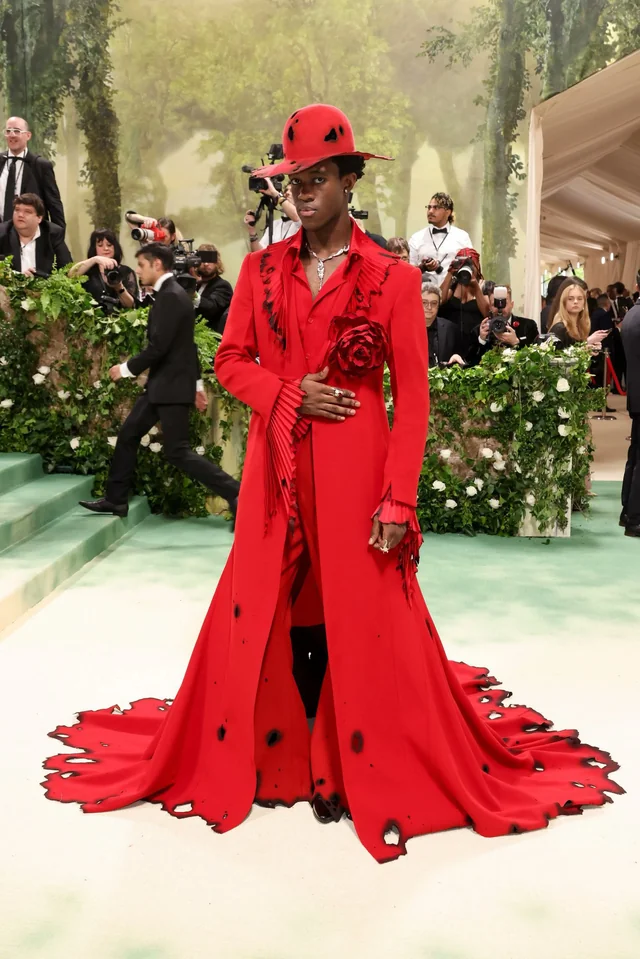In the glitzy world of high fashion, the Met Gala stands as an iconic event, a glamorous gathering that sets the tone for trends and styles in the industry. This year, a flood of Asian designers has been featured by the MET Gala and these Asian talents have pulled out some major red carpet moments there.

Credit: Getty Images

This rising wave of more and more Asian designers dressing celebrities shone on the red carpet, signaling a significant shift—Asian designers are marketing themselves to Western market, which once were divided industry. However, this merging does not limit to fashion industry.
Amidst the buzz of the MET Gala, another event has been making waves in the world—the Gold Gala. This exclusive gathering, akin to a “MET Gala” for the top 100 Asian influential talents across fashion, entertainment, technology and more, takes place in Los Angeles around the same time as its New York counterpart. It’s more than just a glamorous affair; it’s a celebration of Asian excellence and a platform for recognition on a global scale.
The Gold Gala: A Glimpse into Asian Influence
The Gold Gala, launched three years ago, has quickly become a cultural phenomenon. It honours the Gold House’s annual A100 list – one hundred Asian Pacific leaders who have made a significant impact on culture and society worldwide. This year, notable figures like author and TV host Padma Lakshmi, actor Lucy Liu, and the team behind Netflix’s hit show “Beef” were honoured.



As the A-listers walked the red carpet before the ceremony, many of them proudly embracing Asian designers and cultural heritage through their red carpet looks. Take actor Karrueche Tran, for example, who turned heads in a stunning red ao dai adorned with a sheer overlay and headpiece by Vietnamese American fashion designer Thai Nguyen. Reflecting on her choice, she expressed on Instagram, “I knew I had to represent my culture, which is half of who I am, in a major way.”



By celebrating the top Asian trailblazers across industries and showcasing the Asian designers’ creations on its stage, the Gold Gala not only serves as just a glamorous affair, but a contribution to organizations advocating for Asian minorities in business and economic markets.
Bing Chen, president and co-founder of Gold House, succinctly captures the essence of the Gold Gala’s mission: “Gold Gala has three goals, honor the most impactful Asian and Pacific Islander achievements of the last year, launch a new slate of initiatives that will forge the next wave of the API movement and deliver an unparalleled and unforgettable experience for guests inside the wrapping of the largest gathering of top API cultural leaders in history.” Thus, the event not only recognizes excellence but also initiates endeavors that propel the API community forward, fostering growth and paving the way for future generations of entrepreneurs.
The Transformative Trend of Embracing Diversity and Inclusion
In Hollywood and other high performing industries, Asians have long faced barriers, whether through underrepresentation or stereotypes. But that has changed in recent years. Since the groundbreaking release of the film and book trilogy “Crazy Rich Asians” in 2018, there has been a seismic shift across sectors once divided by race and market barriers. From movies to fashion to influencers, Asians are making significant strides in marketing themselves to Western markets and breaking through previously inaccessible industries.
A collaborative study conducted by Gold House and USC Annenberg found that the percentage of speaking Asian characters in top box-office films in the US rose from a mere 3.4% in 2007 to a substantial 15.9% in 2022. Moreover, these roles are no longer limited to mere stereotypes; they are becoming more complex and nuanced. Just as Lakshmi said during the Gold Gala, “I think what the industry has realized is that Asian creativity and talent are both different and lucrative. So, it’s been wonderful to see people take chances, and how we’ve knocked it out of the park.”
As we continue to witness the growth of the Gold Gala and its impact on global culture, it becomes evident that the transformative trend of embracing diversity and inclusion is going to shape the future of industries worldwide.
Takeaways for Brands in Marketing Strategies
In today’s global marketplace, brands must adapt to the exponential growth and influence of the Asian market to remain competitive. Understanding the unique needs and preferences of Asian consumers is crucial for positioning brands for success in this ever-evolving landscape.
Key considerations for Developing Marketing Strategies in the Asian Market:
1. Cultural Diversity:
The Asian market presents a vast opportunity for brands, given its expansive consumer base. However, Asia encompasses numerous countries and even different cultures within same country. Brands must tailor their marketing strategies to consider regional cultural characteristics and differences and develop localized marketing plans that resonate with consumers.
2. Rapid Economic Growth:
Asian economies, particularly in China, India, and Southeast Asian countries, are undergoing rapid economic expansion, This growth translates to increased consumer purchasing power and demand for a wide range of products and services. Brands can leverage this economic momentum by offering innovative and high-quality offerings that meet the evolving needs of Asian consumers.
3. Active Social Media Presence:
Asian users are highly active on social media platforms, providing brands with opportunities to engage with them and enhance brand awareness through localized platforms. For instance, Chinese consumers heavily use Little Red Book, WeChat, Weibo, and Douyin (Chinese TikTok), while South Korea consumers uses Instagram, KakaoTalk, Youtube, and Naver.
4.Emphasis on Relationship Marketing:
In Asia, interpersonal relationships and communities play crucial roles in business activities. Effective relationship marketing strategies that emphasize personalized communication and genuine connection with customers can help brands build a loyal customer base and lead to long-term brand advocacy.
5. Young Consumer Demographic:
Asian has a large population of young consumers who seek trends in fashion, beauty and lifestyle, brands must cater to the preferences of this demographic by offering innovative and trend-focused marketing initiatives that meet their interests.
Unlock Success in Chinese-Speaking Markets with Ignite Search
Our full-service digital marketing agency helps Australians-based companies succeed in lucrative chinese-speaking markets, and vice versa. That’s in China, Asia, Australia, and more.
Navigating the unique landscapes of Chinese-speaking internet, social media, and e-commerce requires specialised expertise, which is where Ignite Search steps in. From WeChat Marketing to Little Red Book Marketing, KOL Marketing, Chinese Translation & Interpreting, and more, we offer key services tailored to help you reach the largest and most active audiences. Let us guide you through the dynamic online trends and help you establish a powerful presence in Chinese markets.
Contact us today to explore how our friendly and experienced Chinese digital marketing consultants can elevate your brand’s success. For additional services beyond Chinese marketing strategies, visit our website or give us a call at (08) 9467 9883.










